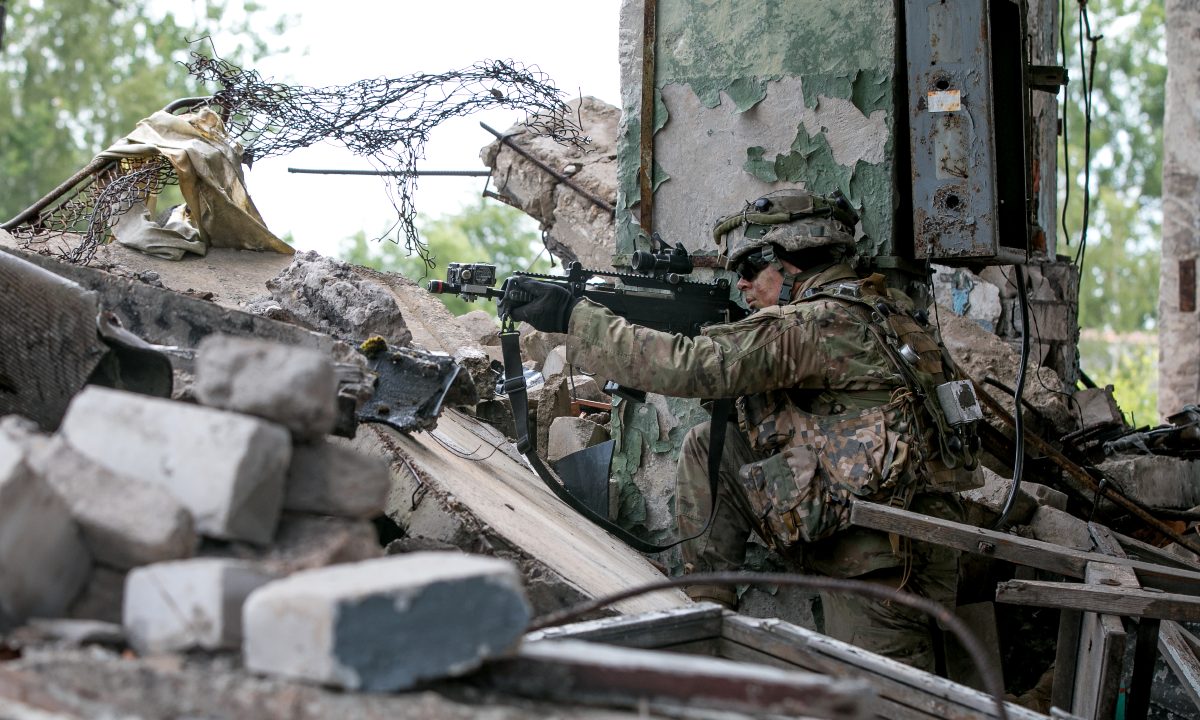Defending the City: An Overview of Defensive Tactics from the Modern History of Urban Warfare - Modern War Institute

🌈 Abstract
The article discusses the importance of urban defense in future wars against peer or near-peer enemies, and provides historical examples and tactics that can be used to strengthen urban defenses.
🙋 Q&A
[01] Importance of Urban Defense
1. Why is urban defense important for militaries?
- Any future war against a peer or near-peer enemy will contain some measure of urban combat, so militaries must be prepared to conduct both urban offense and defense operations.
- Urban terrain contains unique characteristics that allow for a very strong and lethal defense to be conducted, such as density, construction, and complexity of the physical terrain.
- A well-planned and -constructed urban defense could determine the success or failure of achieving a strategic objective, and could influence the outcome of a war.
2. What are the key characteristics of successful urban defenses?
- Preparation, security, disruption, massing effects, and flexibility
- Primary types of defenses such as area, mobile, and retrograde
- Sequencing and different schemes of maneuver like area defense, defense of key terrain, and defense of an urban strongpoint
- Seven steps to engagement area development
[02] Tactics for Strengthening Urban Defenses
1. Building Strongpoints
- Reinforce buildings or use preexisting structures that are already hard to destroy, like heavy-clad concrete structures, to create mini-fortresses within the city.
- Harden the structure and create numerous bunkers within the fortress using materials like sandbags, lumber, steel girders, and create an obstacle network around the building.
- Example: Pavlov's House in the Battle of Stalingrad
2. Rubbling Buildings
- Purposefully destroy structures to produce rubble that can block avenues of approach, funnel attacking forces into engagement areas, and constrain their ability to maneuver.
- Example: German engineers in Ortona, Italy extensively rubbled buildings to support the defense of the city.
3. Concrete Barriers
- Use existing concrete barriers for vehicle checkpoints or infrastructure protection as ready-made field fortifications.
- Example: ISIS fighters used concrete barriers left behind by coalition forces to defend Mosul, Iraq.
4. Interior Building Heavy Weapon Systems Positions
- Disassemble and reassemble large weapons on higher floors of buildings to provide superior lines of sight and angles of fire, and create bunker-like protection.
- Example: Japanese naval defense forces and German defenders in the Battle of Ortona.
5. Concealment Techniques
- Use simple solutions like wood, tin, tarpaulins or cloth sheet coverings to hide obstacles, weapon systems, battle positions, and personnel from aerial observation.
- Example: Civilians in Aleppo, Syria and ISIS in Raqqa, Syria used this technique.
6. Mouseholes and Tunnels
- Create holes in interior and exterior walls of buildings (mouseholes) and utilize tunnels and subterranean spaces to enable hidden movement and force protection.
- Example: ISIS fighters in the Battle of Marawi and German soldiers in the Battle of Berlin.
7. Caches
- Pre-position ammunition, medical supplies, water, and rations in hidden, protected, and concealed locations to support multiple battle positions.
- Example: Germans at the Battle of Ortona and Japanese naval defense forces at the Battle of Manila.
8. Rapidly Emplaced Hasty Obstacles
- Use readily available urban objects like vehicles, furniture, and debris to create obstacles that channel, divert, or halt enemy movement.
- Example: Mahdi militiamen in Sadr City, Iraq and North Koreans in the Battle of Seoul.
9. Hit-and-Run, Antiarmor Ambushes
- Use mobile antiarmor ambushes by small, lethal teams to achieve momentum-stopping effects on enemy forces.
- Example: Chechen separatists in the First Battle of Grozny.
10. Snipers
- Leverage the urban environment's many protected hide sites and concealed firing lines to employ snipers as a force multiplier.
- Example: Soviet snipers in the Battle of Stalingrad.
Shared by Daniel Chen ·
© 2024 NewMotor Inc.